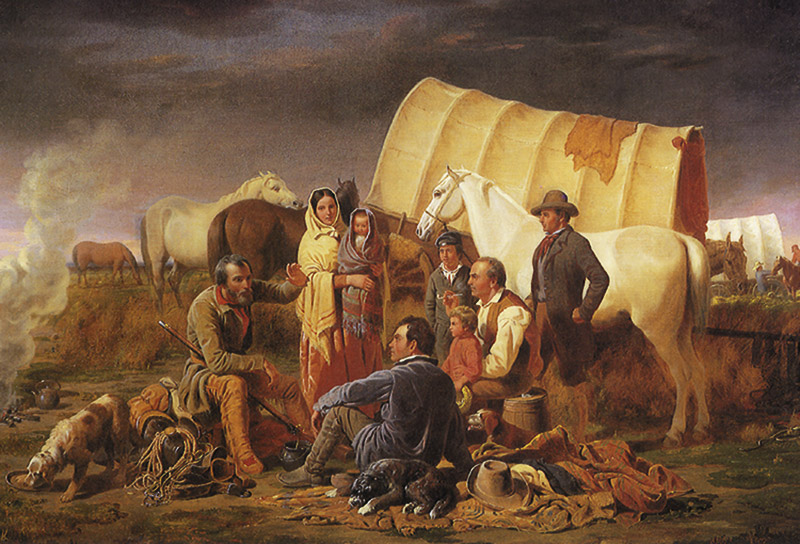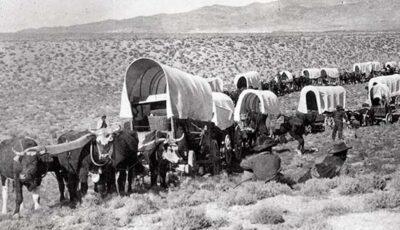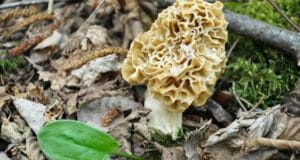There’s a pioneer cooking tradition in the United States that stretched from cook camps on cattle drives to lumber camps. It’s “perpetual soup,” known in some regions as the Skillagalee kettle.
Back in 1910, Horace Kephart wrote an iconic book titled: The Book of Camping and Woodcraft: A Guidebook for Those who Travel in the Wilderness. He covered just about everything related to living and surviving in the wilderness back then, and had this to say about this type of food: “Into it go all the clean ends of game — heads, tails, wings, feet, giblets, large bones — also the leftovers of fish, flesh, and fowl, of any and all sorts of vegetables, rice or other cereals, macaroni, stale bread, everything edible except fat.”
The post, he said, is “always kept hot” and its “flavors are forever changing, but ever welcome.”
“It is always ready, day or night for the hungry, varlet who missed connections or who wants a bite between meals. No cook who values his peace of mind will fail to have skilly simmering at all hours.”
Let’s look at this food and its benefits
The constant simmering and perpetual heat under the pot is actually an old food-preservation technique. By keeping the broth at a steady temperature between 180 to 200 degrees Fahrenheit, anyone helping themselves would not suffer the consequences of food contamination. You could almost think of it as the pioneer Crock-Pot which was especially handy in a time with no electricity.
And that’s something to think about. As Kephart noted in his book, you can add just about anything to the pot. Personally, I don’t think I’d toss fish bones in with the chicken and beef bones, but maybe someday I’ll try it. What’s important is that the combination of ingredients are a potent brew of macro and micronutrients.
How to Make it in Your Kitchen
But you don’t have to hang out the cast-iron cookware over the open fire just yet. You can easily make perpetual soup in a Crock-Pot with some traditional recipes and just keep it on a setting that maintains a high-simmer. I’ve often done this on week-long fishing and hunting trips when I found myself sharing a cabin with five or six guys who always seemed to be hungry. I was the cook on all of these trips and appreciated Kephart’s recollection of a recipe for my own sanity when some of the guys came in from the cold.
Soup Tips
You may be tempted to assume that making your own perpetual soup is no different than a traditional soup, but it’s the “ongoing additive nature” of this particular dish that makes it unique. We’ll cover a traditional approach that’s a bit less eclectic than the old 1910 version.
There are three basic things you’ll want to keep an eye on with your perpetual soup, whether it’s simmering over the fire or in a Crock-Pot:
- Slow and steady heat that keeps the broth between 180 to 200 degrees Fahrenheit. This is a bit easier with a Crock-Pot, and a gently, bubbling simmer should be apparent. Over an open fire you’re probably going to have to improvise and make some more physical adjustments.
- One thing that will definitely affect your simmer is the frequent addition of water. As the soup evaporates and is consumed, the broth needs to be replenished. There’s no precise measurement here. Just do what makes sense without overfilling. You also may need to crank up the heat a bit for a while to get your good simmer back.
- Keep adding ingredients. This is what makes perpetual soup so unique. Every time you add something new, it will impart a new set of flavors and nutrients.
The Healthiest “Survival Food” You’ll Ever Eat!
Perpetual Soup Ingredients
The idea is to start with a foundation that you can add to, day to day.
Water
This amount depends on the size of your pot, but I usually fill the pot 2/3 full whether it’s a Crock-Pot or a kettle on the fire. You’ll want to cover with a lid, but make sure you balance your heat to the proper simmer with the lid in place. A lid over any hot liquid will increase the temperature as heat is added, and you could end up with a rolling boil or boil-over instead of a very gentle boil or robust simmer.
Vegetables
I like carrots, celery, roughly chopped onions with the skins still on (this will add a nice, caramel color to the broth), other root vegetables and stalk trimmings like radish and turnip stalks. Leave out the beets and trimmings unless you want a very bloody, red color.
Bones
Beef bones, pork bones, chicken and pheasant carcasses and turkey carcasses. Get them bones in there. They add wonderful flavor and lots of good stuff. At some point you can pull out the big beef bones and make your dog very happy. He might like a sprinkle of the broth on his dry dog food.
Seasonings
You have to balance this with your group’s sodium tolerance. Seasonings related to broth tend to be defined by salt. You may be pleasantly surprised that as your perpetual soup matures, its flavor grows and diminishes your craving for salt. Just taste as you go and go and go.
Fats are typically not a good idea with a Skillagalee pot, but they’re unavoidable. Also, if your fire went out at camp or you let the broth boil away overnight in your Crock-Pot, toss it and start over.
Add as you go from one day to the next, but think about how certain ingredients can dominate flavors long-term. Once you add fish bones to a stock, it will linger. Same is true for hot peppers and other dominant flavors. I love garlic, but a few trimmings in the pot will last and last.
Lastly, know when to quit. This could become very obvious as the off-flavors just don’t seem to be working. In my case, it’s when my wife complains about those constant smells in the kitchen from “that Crock-Pot.”
It’s easy to start over. After all, you’re just using water, trimmings and some simple seasoning.
The concept is pretty simple and it’s not like it takes a lot of practice. But the next time the lights go out or you find yourself with a large group for a while, give it a try.
 Off The Grid News Better Ideas For Off The Grid Living
Off The Grid News Better Ideas For Off The Grid Living





